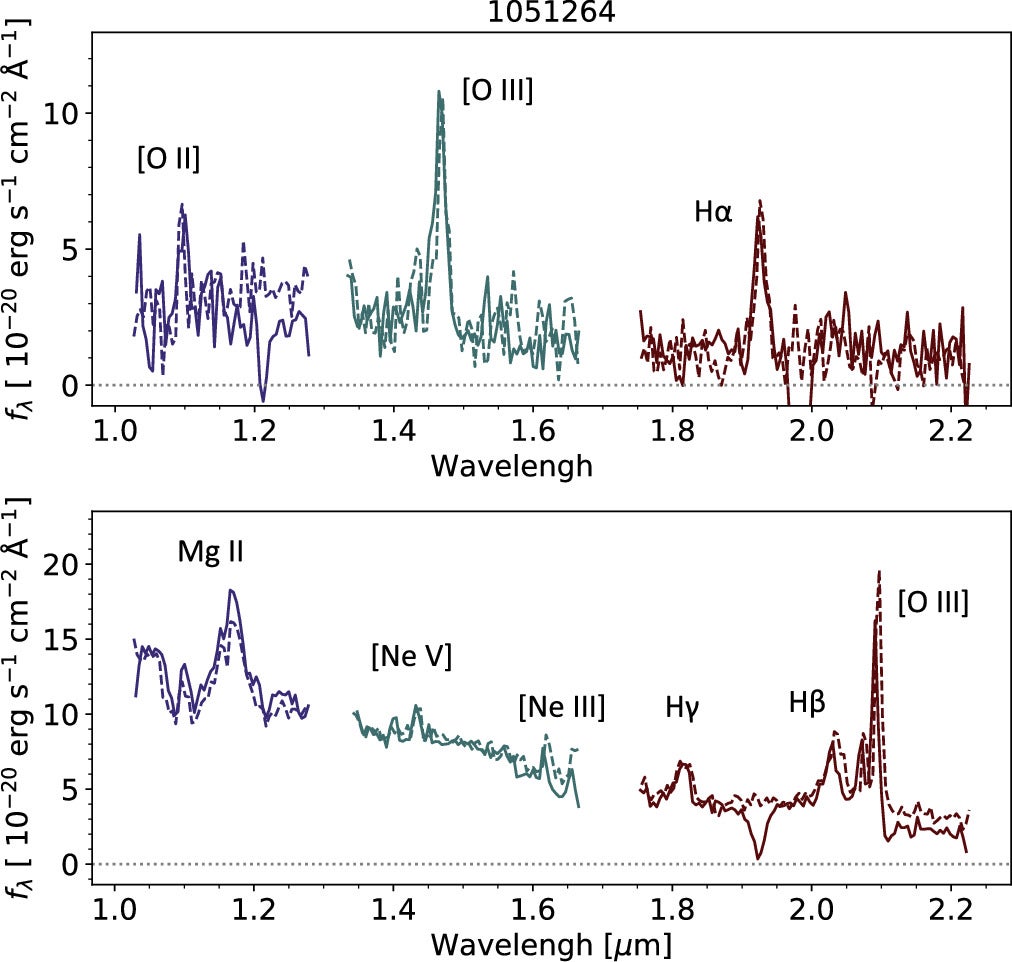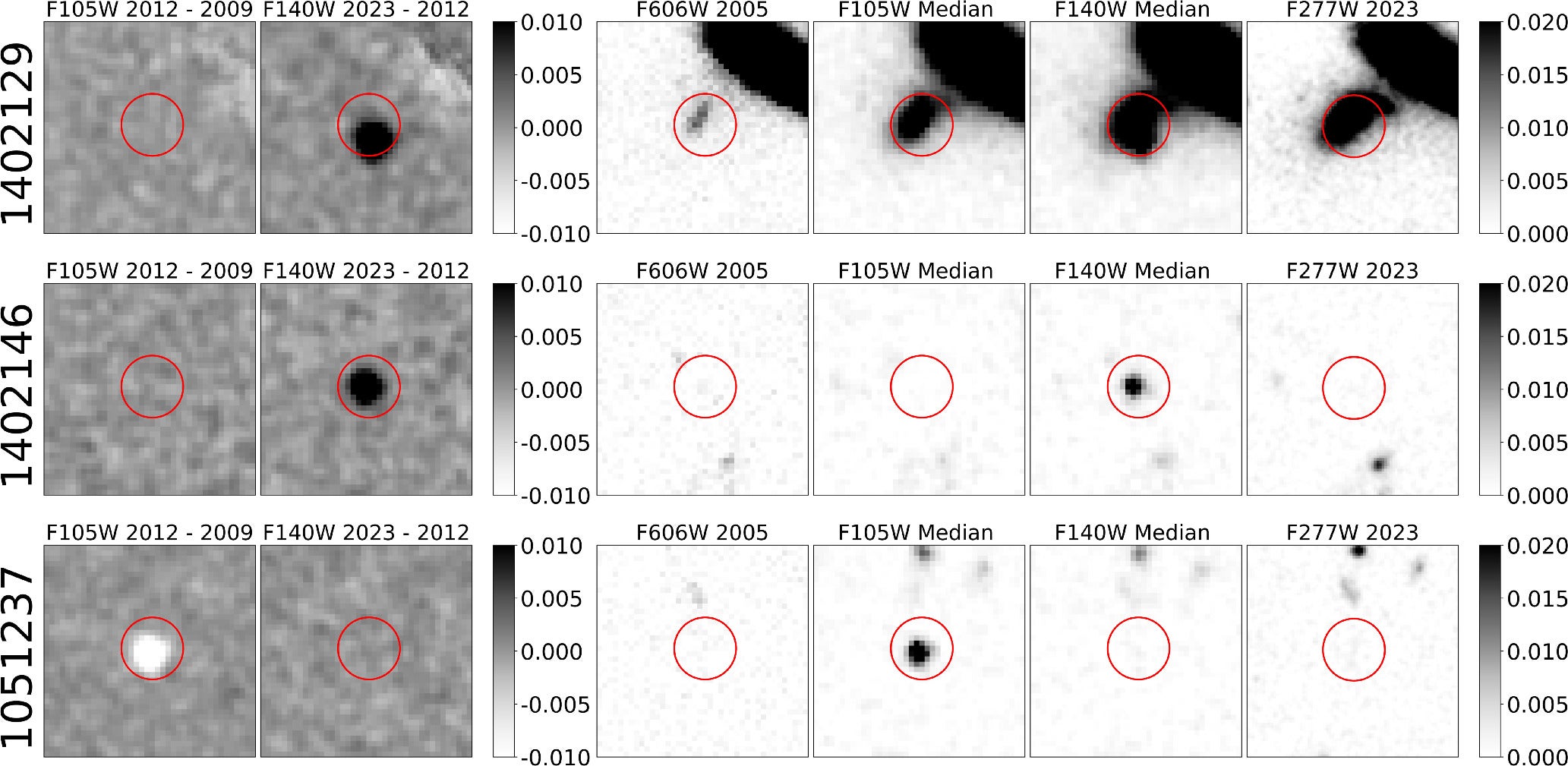Black holes are among the most mysterious and influential phenomena in the cosmos. They hold the key to understanding the early universe, galaxy formation, and the evolution of cosmic structures.
Recent findings, published in The Astrophysical Journal Letters, driven by innovative imaging techniques, offer a groundbreaking perspective on how these enigmatic objects shaped the universe’s infancy.
Using the Hubble Space Telescope, scientists conducted an unprecedented near-infrared survey of the Hubble Ultra Deep Field (HUDF). By comparing images taken over a decade apart, they aimed to uncover active galactic nuclei (AGN) and measure the abundance of supermassive black holes (SMBHs) in the early universe.
This ambitious project revealed a treasure trove of data, including AGN candidates and variable sources that illuminate the dynamics of black hole formation.

Researchers identified eight variable objects in this survey, three of which are likely supernovae. Two AGN were confirmed at redshifts 2.0 and 3.2, while three others, detected at redshifts 6–7, are strong AGN candidates. These findings provide vital insights into the abundance of SMBHs during the reionization epoch, approximately 13 billion years ago.
Early results estimate that SMBH density at this time was at least 3×10−43 times 10^{-4}3×10−4 per cubic megaparsec, potentially exceeding 8×10−38 times 10^{-3}8×10−3, a value strikingly similar to SMBH densities observed today.
The discovery of early AGN sheds light on their critical role in shaping the cosmos. Each AGN signals the presence of a SMBH, and understanding their abundance offers clues to the processes that forged these colossal objects.
Theories of SMBH formation vary widely, from the collapse of massive stars to gas cloud mergers or primordial origins shortly after the Big Bang. Observations from NASA’s James Webb Space Telescope (JWST) further support these findings, indicating that AGN may have been more common in the reionization epoch than previously assumed.
Related Stories
AGN are crucial contributors to the ionizing photon production that drove cosmic reionization. These high-energy emissions helped strip electrons from hydrogen atoms, transforming the opaque early universe into the transparent expanse we see today. However, detecting AGN in faint, high-redshift galaxies presents significant challenges due to their subtle and variable signatures.
Traditional methods for identifying AGN rely on detecting emissions such as X-rays, radio waves, or infrared radiation. However, these methods often miss faint AGN, especially in distant galaxies. To overcome this limitation, the Hubble team employed a novel approach: photometric variability. This technique monitors changes in brightness caused by fluctuations in SMBH accretion rates, providing a direct and unbiased probe of AGN activity.
Reanalyzing HUDF data from 2009 to 2023, scientists discovered variability in several high-redshift objects, confirming the presence of AGN. These observations are a testament to the potential of long-term monitoring and highlight the importance of instruments like Hubble and JWST in exploring the distant universe.
“The ability to detect these subtle variations in light opens a new window into understanding the early universe,” said Matthew Hayes, lead author of the study. “It allows us to identify black holes that might otherwise remain hidden.”

Understanding how black holes formed shortly after the Big Bang remains a central question in astrophysics. Some black holes likely emerged from the collapse of massive, pristine stars, which existed only in the universe’s first billion years. Unlike later-generation stars, these early giants were free from the chemical pollutants produced by stellar life cycles.
Other theories suggest that black holes may have originated from collapsing gas clouds, stellar mergers, or even “primordial” mechanisms that occurred seconds after the Big Bang. These models aim to explain how SMBHs weighing millions or billions of solar masses could exist so early in cosmic history.
“Many of these objects seem to be more massive than we originally thought they could be at such early times,” noted Alice Young, co-author of the study. “Either they formed very massive or they grew extremely quickly.”
By incorporating these findings into galaxy evolution models, astronomers can better understand the interplay between black holes and their host galaxies. AGN influence galaxy formation by regulating star formation, shaping luminosity functions, and driving other critical processes.

The results from the HUDF survey mark a significant step forward in unraveling the mysteries of the early universe. By identifying AGN through photometric variability, researchers have established a method that complements traditional techniques and promises to yield even more discoveries in the future.
NASA’s JWST will continue this exploration, with its superior infrared sensitivity offering an unparalleled view of high-redshift galaxies and their AGN. Over time, these observations will refine our understanding of SMBH formation, growth, and their role in cosmic history.
“Together with models for how black holes grow, these findings place galaxy evolution calculations on a more physically motivated footing,” said Hayes. “They provide an accurate scheme for how black holes came into existence.”
As astronomers probe deeper into the cosmos, the story of black holes offers profound insights into the origins of galaxies, stars, and the universe itself. Each discovery brings us closer to answering fundamental questions about our place in the cosmos and the forces that shaped it.
Note: Materials provided above by The Brighter Side of News. Content may be edited for style and length.
Like these kind of feel good stories? Get The Brighter Side of News’ newsletter.
The post More black holes discovered than expected in the early universe appeared first on The Brighter Side of News.
Leave a comment
You must be logged in to post a comment.